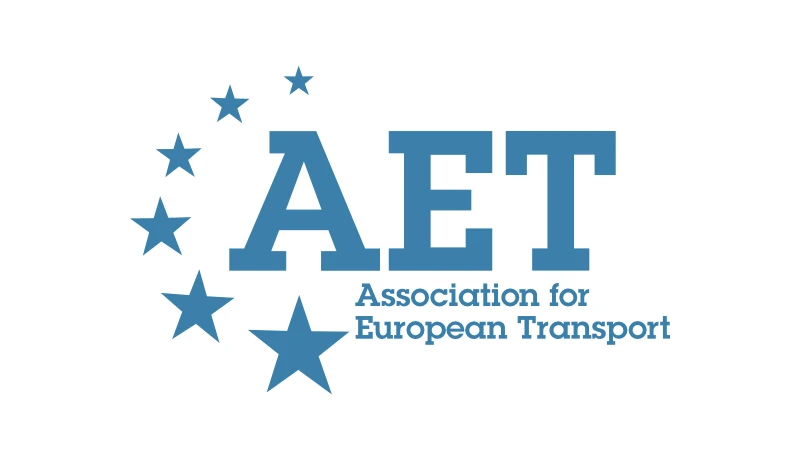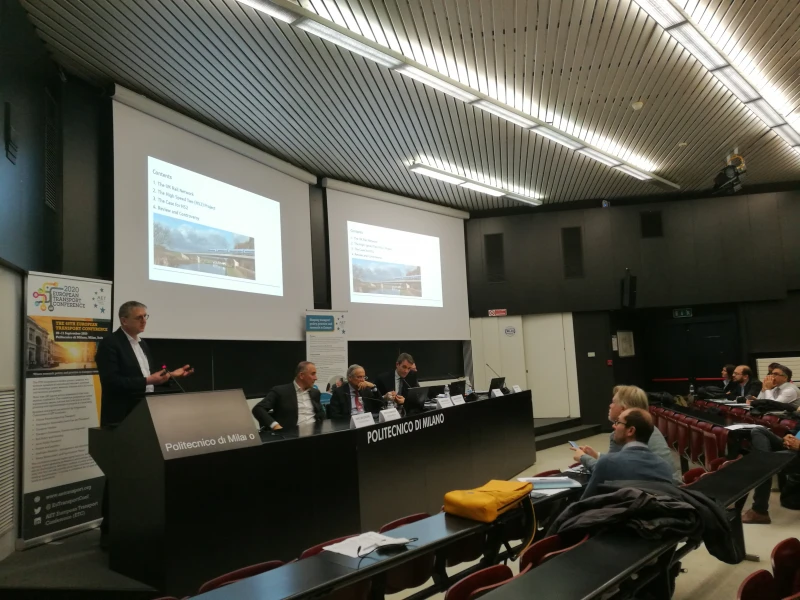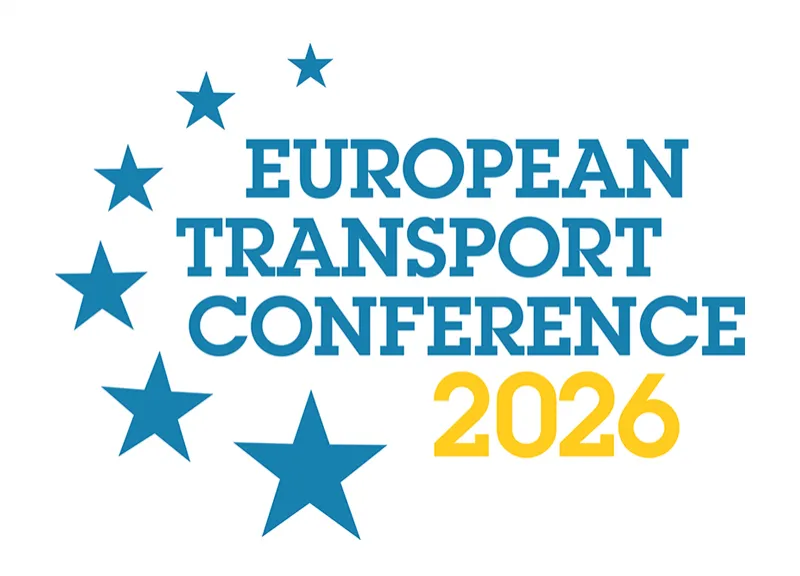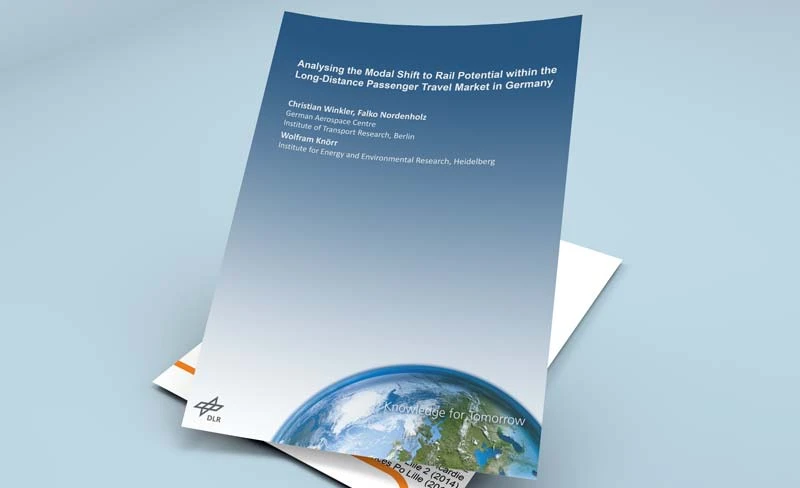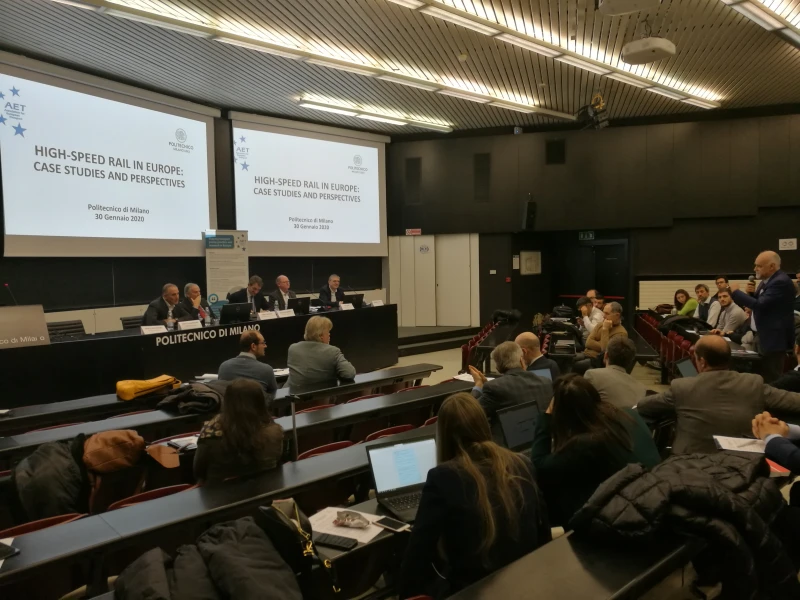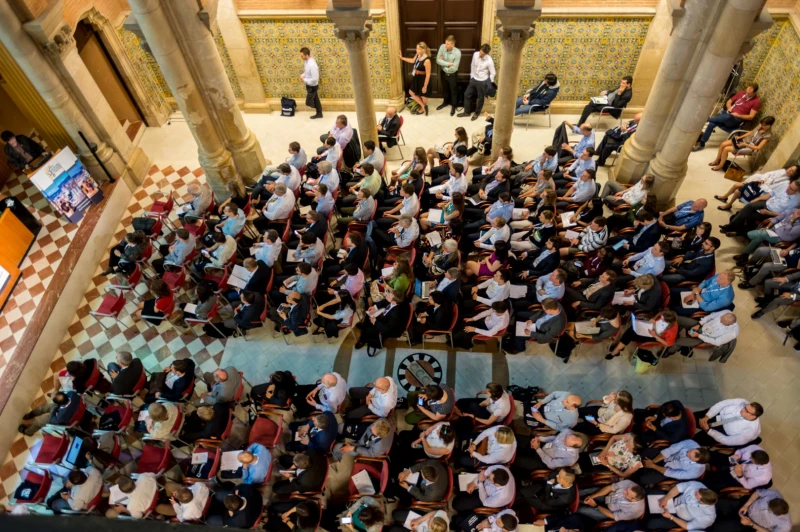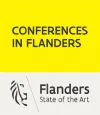European Transport Conference Awards
|
The European Transport Conference Awards are presented annually at the conference. The awards are made up of the Goudappel Land-Use/Transportation Award, the Jacobs Award for Most Innovative use of Data, the AET Young Researchers' and Practitioners' Forum Neil Mansfield Award and the Systematica Fabio Casiroli Award for the best paper focusing on the concept of time-based urban mobility, in relation to accessibility, proximity, and social, economic and environmental sustainability.
|
|

|

|

|

|
Goudappel Land-Use/Transportation Award
The Goudappel Land-Use/Transportation Award is given to the best paper presented in the Planning for Sustainable Land Use and Transport seminar stream.
The Goudappel award for the best paper written for and presented in a Planning for Sustainable Land Use and Transport seminar was awarded to Carlijn van der Sluijs, Lara Borst and Kobus Zantema (Working at the municipality of Amsterdam in the Netherlands). Their paper “‘Sustainable strategies for urban infrastructure: a data-driven approach to bridge and quay wall restoration in Amsterdam” was chosen as the unanimous winner.
The five-person jury praised the winner and described it as “well researched and an excellent example of using a well-established methodology in a new application. The developed and applied methodology ranks all bridges researched by the extra travel time that closing-off these bridges may impose on traffic in Amsterdam. Overall, a very good paper and well written. The jury values the very good illustrations (maps) to show how the methodology actually works. Also, the paper was very well presented at the conference in Antwerp.”
Goudappel Award Winners
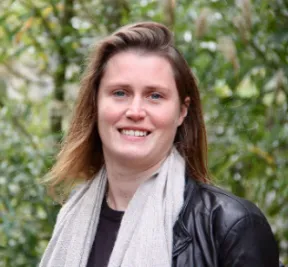 |
Carlijn van der Sluijs is a data researcher in the Traffic and Public Space department of the Municipality of Amsterdam. With a background in forensic toxicology, she now applies her data expertise to improve the city’s infrastructure and sustainability. Specializing in geospatial data, Carlijn develops models and algorithms that provide new insights into complex issues.
|
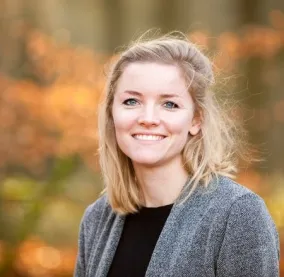 |
Lara Borst is Innovation Manager at the Bridges and Quay Walls Program of the City of Amsterdam. She holds a master's degree in Transport, Infrastructure, and Logistics at Delft Technical University. She works, together with knowledge institutions, market parties, and other governments, on an innovative ecosystem for future-proof bridges and quay walls. One of the issues is the influence of and impact on traffic flows.
|

|
Kobus Zantema is mobility researcher for the municipality of Amsterdam, with a focus on traffic modelling. He holds a master’s degree in Transport and Planning at Delft Technical University. As a researcher for the municipality of Amsterdam, most of his work consists of calculating the effects of new building projects on the city’s traffic network and keeping the Amsterdam traffic model up to date.
|
2023 - Eivind Jamholt Baera, Linda Alfheim, Glenn Lyons & Charlene Rohr
2022 - Reza Tolouei and Arwa Sayegh, AECOM, United Kingdom, Mia-Jade Thornton, National Highways, United Kingdom
"A novel approach to developing LGV trip matrices for the second generation of regional traffic models"
2021 - Sarah McDonagh, Technological University Dublin, Ireland
"Considering Children's Travel Needs'"

Jacobs Award for Most Innovative Use of Data
The Jacobs Data Award is given to the paper showing the most innovative use of data in transport policy, practice or research.
The winner of the 2024 Jacobs Award is "Overcoming Population Bias: Pathways to Enhance Smartcard Data with Home Location and Trip Purpose Information" by Joe Fenwick of Public Transport Service Planning, Transport for London. This paper was co-authored by Howard Wong & Sophie Levi-Kallin.
More about the Jacob's Award winning paper and Author
This paper provides a comprehensive analysis of smartcard transaction data from public transport (PT) automated fare collection (AFC) systems, focusing on addressing selection bias and home location inference.
This paper stood out for its impressive use of smartcard transaction data and the application of data science and machine learning techniques to overcome existing limitations and biases. The study employed unsupervised learning methods, including hierarchical clustering and K-Means, to determine base location types and infer non-typical mobility patterns. The detailed exploratory data analysis (EDA) and feature engineering, such as PCA and normalisation, highlighted advancements in this type of data analysis.
The paper impressed the judging panel at each stage of the selection process with its innovative approach and potential impact. By addressing selection bias and improving home location inference, the study offers valuable insights that can enhance the accuracy and inclusiveness of PT smartcard data analysis. Its methodological rigor and creative solutions to common data challenges made it a standout candidate and the deserving winner of the award. Its contributions to the field of data science and public transportation analytics are significant and pave the way for further advancements in understanding and utilising smartcard transaction data.
Jacobs Award Winner
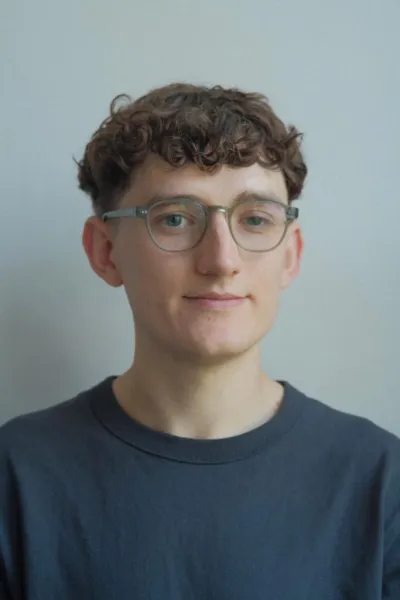 |
Joe Fenwick is a transport planner at Transport for London (TfL) working in public transport service planning, where he specialises in travel demand modelling and analysis. He holds a computational chemistry degree from the University of Manchester, and a postgraduate degree in Urban Design from The Bartlett, University College London. At TfL, Joe has pioneered pathways to integrate research into industry practice. His research combines his computational modelling skillset with a deep knowledge of urban processes, aimed at fostering more inclusive and equitable transport planning.
|
2023 - Katherine Cai Xuefen, Land Transport Authority of Singapore
2022 - Goktug Tenekeci, Jacobs, United Kingdom
"A method for economic benefits for re-allocating road space for cyclists"
2021 - Ella Dahan and Aastha Madaan, Arup, United Kingdom
"Spot the private hire: using machine learning to identify private hire vehicles from camera data"
2020 - Peter O’Hare, Salford City Council, United Kingdom and Paul Jackson, Tracsis, United Kingdom
"Harnessing people movement data to shape future activity and people-centric designs: a case study of Salford Quays"
2020 - Runner Up - G di Acciaro, G Ciccarelli, NET Engineering S.p.A, BU Transport & Mobility, Italy; C Andriolo, Comune di Vicenza, Area servizi al territorio, Servizio Mobilità e Trasporti, Italy; K Muthmann, Cyface GmbH, Germany
"A novel location data intelligence framework fostering smart cycling inclusion and transport decarbonisation in small- to medium-sized European cities. Evidence-based findings from recent trials conducted in German and Italian cities"
2020 - Third Place - X Karekla, AECOM, United Kingdom
"Passenger safety: the impact of smoother bus acceleration on passenger experience aboard London buses"
2020- Special Mention - Y Shi, Y Xu, A Ferraioli, B Piga, L Mussone and G Caruso, Politecnico di Milano, Italy
"A method of processing eye-tracking data to study driver’s visual perception in simulated driving scenarios"
2020 - Special Mention - S Amin, L Froger and O Haas, Coventry University, United Kingdom
"Route optimisation programming for emergency vehicles aftermath of freight train accidents involving hazardous materials (7002)"
Neil Mansfield Award
Neil Mansfield Award for the best paper from a sole author aged 35 or under. The Neil Mansfield award is given in the name of a brilliant young researcher in the UK who passed away at a young age. The award is administered by the AET Young Researchers’ and Practitioners’ Forum.
The Neil Mansfield Award Winner
The winner of the Neil Mansfield Award 2025, at the 53rd ETC is Marco Baldini.
Marco’s winning paper, “Bikeability Assessment through Hybrid Choice Models: Revealed Preferences from Lombardy Region”, explores the factors that influence bikeability—the perceived quality of a cycling trip. By applying advanced discrete choice modelling, his research highlights how both physical and perceptual aspects of the built environment affect cycling experiences. The findings offer valuable guidance for the design of inclusive and sustainable cycling infrastructure.
AET congratulates Marco on this achievement and for his contribution to advancing understanding in user-centred and sustainable mobility planning
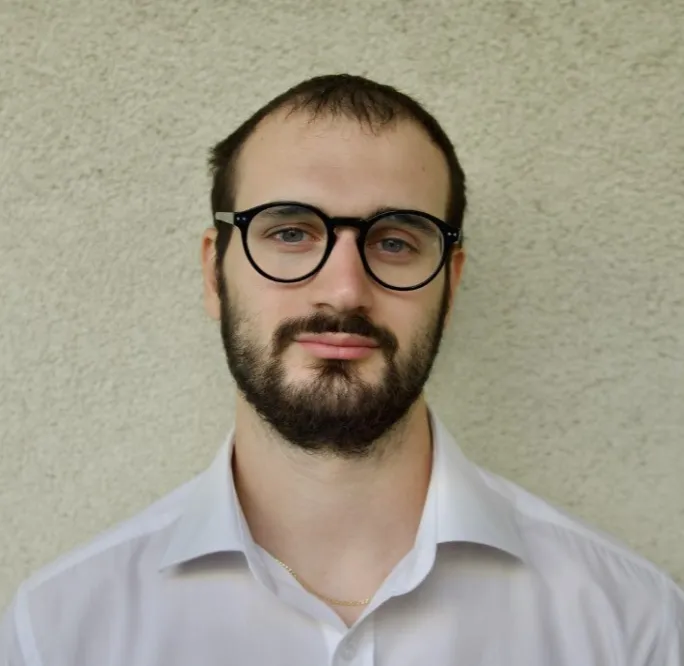 |
Marco Baldini graduated in Mobility Engineering at Politecnico di Milano in 2024. He is currently a PhD candidate at the Department of Mechanical Engineering in the same University. His research focuses on sustainable urban mobility planning, using discrete choice models for bikeability and walkability assessment.
|
2024 - Marco Sala, NET Engineering, Italy
“Smart Road assessment: analysis of impacts on levels of service, emissions and road safety”
2023 - Jamie Ward, Ramboll, United Kingdom
"A route-level analysis of factors affecting the relationships between bike sharing and public transport in central London: integration, complementation and substitution”
2022 - Francesco De Fabiis and Alessandro Mancuso, Politecnico di Milano, Italy
"Spatial Regression Analysis To Assess Economic Impacts Of Transport Infrastructure"
2021 - Federico Messa, Transform Transport, Systematica and Supervised by Diego Deponte, Systematica, Italy
"Free-flow carsharing systems in a spatio-temporal urban ecosystem: an urban informatics approach"
2020 - Zishu Liu, ARUP, United Kingdom
"Using Google Maps to calculate generalised cost and accessibility for London: a new methodology"
2019 - Joshua (Xihe) Jiao, Arcadis, United Kingdom
"A new travel demand model for outdoor recreation trips"
2018 - Umair Hasan, Curtin University, Australia
"Framework for delivering an AV-based mass mobility solution: integrating government consumer actors and life-cycle analysis of transportation systems"
2016 - Sebastian Kauschke, TU Darmstadt, Germany
"Improving cargo train availability with predictive maintenance: an overview and prototype implementation"
2015 - Carl Goves, Transport Systems Catapult, United Kingdom
"Short term traffic prediction for the UK motorway network using an artificial neural network"
2014 - Jeff Tijong, CH2M Hill, United Kingdom
"Re-estimating UK appraisal values for non-work travel time savings using random coefficient model"
2012 - Siamak Khorgami, SKM, United Kingdom
"Comprehensive and applied approach to analysis and modelling of household activities using UK time use data"
2011 - James Fox, University of Leeds, United Kingdom
"Temporal transferability of mode destination models: summary of literature, initial findings"
2010 - Francois Combes, Université Paris-Est, France
"Estimation of the economic order quantity model using the ECHO shipment database"
2009 - Marc Gelhausen, German Aerospace Center (DLR), Germany
"Modelling airport capacity constraints in air travellers' airport choice"
2008 - Astha Balwani, Halcrow, United Kingdom
"Distance based charging: from theory to practice"
2007 - Emma Frejinger, EPFL, Switzerland
"Random sampling of alternatives in a route choice context"
2006 - Marc Gelhausen, German Aerospace Center (DLR), Germany
"Airport and access mode choice in Germany: a generlaized neural logit model approach"
2005 - Yaron Hollander, Institute for Transport Studies, University of Leeds, United Kingdom
"The attitude of bus users to travel time variability"
2004 - Stephane Hess, Imperial College London, United Kingdom
"Models for the joint analysis of airport, airline and access-mode choice for air-passengers in the San Francisco Bay area"
2003 - Ninette Pilegaard, Danish Transport Research Institute, Denmark
"A model of endogenous unemployment and commuting"
2002 - Bas van Herpen, Ministry of Transport, Netherlands
"Public private partnerships, the advantages and disadvantages examined"
2001 - Stephane Lecler, EMTA, France
"What role for public transport authorities in the European metropolitan areas?"
2000 - Richard Batley, ITS, University of Leeds, United Kingdom
"Implications of task complexity for discrete choice analysis: a comparative study of nested logit and PRETREE"
1999 - Carsten Hansen, Aalborg University, Denmark
"The dynamics of local processes towards environmentally sustainable transport – a case study of Lund, Sweden"
1998 - Lisette Hemmen, Ministry of Transport, Netherlands
"The Mass commuter plan: the first ten years"
1997 - John Siraut, Symonds Travers Morgan, United Kingdom
"Regulation of the railways post-privatisation"
1996 - Fabien Leurent, INRETS, France
"An analysis of modelling error with application to a traffic assignment model with continuously distributed values of time"
1995 - Nigel Ash, Sir Alexander Gibb and Partners, UK
"New international transport corridors in the Balkans and their economic and financial evaluation"
1994 - Maarten Kraan, University of Twente, Netherlands
"Time allocation in transportation modelling with respect to limited time and money budgets: a new modelling technique"
1993 - Robert Fejarang, LA County Transportation Commission, United States of America
"Impact of property values: a study of the Los Angeles Metro Rail"
1992 - Charles Yates, Nomura Research Institute, United Kingdom
"Survey of private finance for road infrastructure"
1991 - Francesco Martinez, ITS, University of Leeds, United Kingdom
"Transport investment and land values interaction: the case of Santiago City"
1990 - David Watling, ITS, University of Leeds, United Kingdom
"Recent developments in techniques for analysing partial registration plate data"
1989 - Gerard de Jong, Hague Consulting Group, Netherlands
"Simulating car cost changes using an indirect utility model of car ownership and annual mileage"
1988 - Petros Vythoulkas, Centre for Transport Studies, Cranfield Institute of Technology, United Kingdom
"Modelling dynamic assignment for urban transportation networks"
1986 - D van Goot, Delft University of Technology, Netherlands
"Concentrated traffic flows"
New for 2025: The Fabio Casiroli Award

The Fabio Casiroli Award is awarded to the best paper on time-based urban mobility, highlighting accessibility, proximity, and sustainability across social, economic, and environmental dimensions.y. The award is dedicated to the founder of Systematica, who passed away in 2015.
European Institute of Innovation and Technology (EIT) Urban Mobility Award
| 2022 |
Pierluigi Coppola, Francesco De Fabiis and Luca Barbierato, Politecnico di Milano, Italy; Fulvio Silvestri, University of Rome Tor Vergata, Italy
Users' acceptance and willingness to pay for urban air mobility services: modeling evidences with an application to a case study in Italy
|




